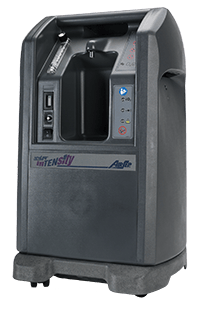
Fraud and identity theft are growing problems, with total cases tripling between 2011 and 2021. In 2021, there were 5.74 million cases of fraud and identity theft, an increase of 18% over the prior year.
Older adults can be victimized for several reasons, including the fact that they may have a higher net worth, could be more trusting, and could lack a complete understanding of current technologies. Knowing more about identity theft can help protect you or an older adult loved one. Here, we go over the details of identity theft, including common methods, possible effects, and the best ways to prevent it from happening.
What is identity theft?
Identity theft takes place when someone wrongfully obtains and uses another person’s data fraudulently or deceptively, typically for financial gain. This stolen information can include Social Security numbers, credit card numbers, bank account information, passwords, and other sensitive data.
With this stolen information, identity thieves can:
- Open new credit accounts in the victim’s name.
- Make purchases using the victim’s existing credit cards or bank accounts.
- Access the victim’s financial accounts and drain funds.
- Obtain loans or mortgages using the victim’s identity.
- File fraudulent tax returns to claim refunds.
Identity theft can cause victims significant financial damage and emotional distress. It can take a long time and considerable effort to rectify the situation and restore one’s credit and financial reputation. To prevent identity theft, individuals should safeguard their personal information, regularly monitor their financial accounts and credit reports, and be cautious when sharing sensitive information online or over the phone.
How do criminals get your personal information?
There are currently 2,200 cyber attacks per day. Criminals can obtain personal information for identity theft through various methods, including:
- Data breaches: Hackers target organizations that store large amounts of personal data, such as financial institutions, health care providers, retailers, and government agencies. They may infiltrate these systems to steal databases containing personal information, including names, addresses, Social Security numbers, and credit card details.
- Phishing: Phishing is a common tactic in which criminals send deceptive emails, text messages, or phone calls, posing as legitimate organizations or individuals. They trick recipients into providing personal information or clicking on malicious links that install malware on their devices, allowing attackers to steal data.
- Social engineering: Attackers exploit human psychology to manipulate individuals into divulging personal information. This method can involve pretexting (creating a false scenario to extract information), or impersonation (posing as someone else to gain trust).
- Stolen wallets or documents: Criminals may steal physical items like wallets, purses, or documents containing personal information, such as driver’s licenses, credit cards, or passports.
- Skimming: Skimming devices can be installed on ATMs, gas pumps, or point-of-sale terminals to capture payment card information when customers make transactions.
- Unsecured Wi-Fi networks: Cybercriminals may eavesdrop on unsecured Wi-Fi networks to intercept data transmitted between devices, potentially capturing sensitive information like login credentials or financial details.
- Data broker services: Some criminals purchase personal information from illicit online marketplaces or data brokers who collect and sell data without individuals’ consent.
To mitigate the risk of identity theft, individuals should remain vigilant about protecting their personal information, use strong passwords, enable two-factor authentication where possible, avoid clicking on suspicious links or providing sensitive information to unknown parties, and regularly monitor their financial accounts and credit reports for any signs of unauthorized activity.
What can happen if you are a victim of identity theft?
If you are the victim of identity theft, the consequences can vary depending on the perpetrator’s actions and the extent of the theft. Here are some specific examples of what could happen:
- Unauthorized purchases: The identity thief may use your stolen credit card information to make large purchases at retail stores, online shops, or luxury boutiques. For example, they could buy expensive electronics, designer clothing, or jewelry, resulting in significant financial loss to you when the bills arrive.
- Fraudulent loans: The thief may apply for loans or lines of credit using your personal information, such as your Social Security number and employment history. They could secure mortgages, auto loans, or personal loans in your name, leaving you responsible for repayment and potentially damaging your credit score if payments are not made.
- Utility fraud: The thief might use your identity to open accounts for utilities, such as electricity, water, or cable. They could run up large bills for services, leaving you responsible for paying the charges or dealing with collection agencies attempting to collect debts you didn’t incur.
- Tax fraud: Identity thieves may file fraudulent tax returns using your Social Security number to claim refunds. Tax scams can result in delays in receiving legitimate tax refunds or trigger tax authorities’ investigations into your financial affairs.
- Medical identity theft: The thief could use your personal information to obtain medical treatment, prescriptions, or medical equipment, leaving you with inaccurate medical records or bills for services you didn’t receive. This type of identity theft can also lead to potential health risks if incorrect information is included in your medical records.
- Criminal activities: In extreme cases, identity thieves may commit crimes using your identity, such as illegally applying for a job under your name, obtaining a driver’s license with your information, or engaging in fraud schemes. You may face legal repercussions if the thief is apprehended, including arrest warrants or court appearances to clear your name.
- Difficulty obtaining loans or employment: Identity theft may negatively impact your credit score, making it challenging to qualify for loans, credit cards, or employment opportunities. Employers and lenders often check credit reports as part of their screening process, and negative information resulting from identity theft could affect your prospects.
These examples highlight the wide-ranging consequences of identity theft, which can extend beyond financial loss to include legal troubles, damage to your reputation, and disruptions to your daily life. It’s essential to take immediate steps to address identity theft if you suspect or discover that you’ve been targeted, including notifying relevant authorities, freezing your credit, and monitoring your accounts for suspicious activity.
How can you prevent identity theft?
Preventing identity theft before it happens requires proactive measures to safeguard your personal information and minimize the risk of it falling into the wrong hands. Here are some steps you can take:
- Be aware: The best way to avoid becoming a victim is to be aware of the methods criminals use to steal someone’s identity.
- Protect personal information: Be cautious about sharing sensitive information such as your Social Security number, driver’s license number, birth date, and financial account details. Provide this information only when necessary, and verify the legitimacy of the person or organization requesting it.
- Use strong passwords: Create strong, unique passwords for your online accounts, and avoid using easily guessable information like birthdays or common words. Use a mix of letters, numbers, and special characters, and consider using a password manager to store and generate passwords securely.
- Enable two-factor authentication (2FA): Enable two-factor authentication for your online accounts whenever possible. 2FA adds an extra layer of security by requiring a second form of verification, such as a code sent to your phone or generated by an app, which must be entered in addition to your password to log in to accounts.
- Secure your devices: Keep your computer, smartphone, and other devices updated with the latest security patches and antivirus software. Use strong passwords or biometric authentication such as fingerprint scanners or facial recognition to lock your devices, and enable remote tracking and wiping features in case they are lost or stolen.
- Be wary of phishing attempts: Be skeptical of unsolicited emails, text messages, or phone calls asking for personal information or directing you to click on links or download attachments. Verify the sender’s or organization’s legitimacy through official channels before responding or providing any information.
- Monitor financial accounts regularly: Review your bank statements, credit card statements, and other financial accounts regularly for any unauthorized transactions or suspicious activity. Report any discrepancies to your financial institution immediately.
- Shred sensitive documents: Shred or securely dispose of documents containing personal information, especially items like bank statements, credit card offers, and receipts.
- Check your credit report: Monitor your credit report regularly for unfamiliar accounts or suspicious activity. You are entitled to a free credit report from each of the three major credit bureaus (Equifax, Experian, and TransUnion) every 12 months.
- Limit exposure on social media: Be mindful of the information you share on social media platforms, as cybercriminals may use this information to piece together details about your identity. Adjust your privacy settings to limit who can view your personal information and posts.
- Consider identity theft protection services: Explore reputable companies’ identity theft protection services. These services may include credit monitoring, identity theft insurance, and assistance resolving identity theft issues.
By implementing these preventive measures, you can reduce the likelihood of falling victim to identity theft and better protect your personal information from unauthorized access or misuse.








